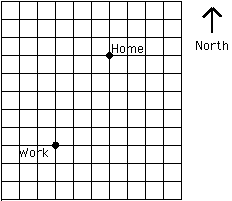

# 4
1. Determine the number of "words" (meaningful or otherwise) that can be made from the set of letters {c,a,b,i,n,e,t}.
2.In a certain computer programming language, a variable name must be either a letter or a letter paired with a single digit. How many different variable names are possible in this language?
3. Create a recursive representation for the set of positive integers {5,8,11, . . .}.
4. How many positive integer solutions exist for sigma(i,1,7;x(i))=14? ?
5. How many books must be chosen from among 24 mathematics books, 25 computer science books, 21 literature books, and 15 economics books to assure that for at least one of the four subjects there are at least 12 books?
6. Suppose you have four tiles from a Scrabble game, as shown here. How many arrangements of these tiles spell the name TOTO?

7. On the floor are a pile of 9 mathematics books and 4 science books, all with different titles. The books are to be placed on one shelf.
a. If a book's title distinguishes it from other books:
(i) How many ways can the 13 books be shelved?
(ii) If no two science books may be adjacent, how many ways can the 13 books be shelved?
b. If a book's subject (mathematics or science) is its only distinguishing property:
(i) How many ways can the 13 books be shelved?
(ii) If all 4 science books must remain together, how many ways can the 13 books be shelved?
8. Here is some information about the business students who live in Whitmer Dormitory:
47 students subscribe to Business Weekly.
44 students subscribe to Newsweek.
32 students subscribe to Time.
11 students subscribe to Business Weekly and Newsweek.
12 students subscribe to Business Weekly and Time.
12 students subscribe to Newsweek and Time.
3 students subscribe to all three magazines.
8 students subscribe to none of these three magazines.
How many business students live in Whitmer Dormitory?
9. During 1993, each weekend Joan invited two of her friends to stay with her. If the same pair of Joan's friends never spent
a second weekend together at Joan's, what is the minimum number of friends Joan drew from to schedule the weekend
visits?
10. How many collected terms in the expansion of (p + q + r + s)^8?
11. Suppose you want to use the pigeonhole principle to convince someone that at least two residents of San Francisco, California, have exactly the same number of hairs on their heads. What information do you need and how will you use it?
12. Consider the expansion of the binomial (n + m)^t.
a. For any term Knamb, state the restrictions on a and b.
b. What is the coefficient of the collected term n^a€m^b?
13. Consider the set of positive integers P = {r,r+1,r+2,...,s}, with r < s.
a. How many elements are in P?
b. How many subsets of P exist?
c. How many subsets of P have exactly 2 elements?
14. In a city where downtown parking is virtually impossible, Jan takes a taxi to and from work each day. Jan's home and place of work are shown in the drawing to the right. If the taxi driver always travels a path exactly 12 blocks long, and all city streets are accessible to the taxi, how many different paths can the taxi travel from Jan's work place to Jan's home?

15. Choose one of the following conjectures and justify that it holds for all cases indicated. I will evaluate only one response. If more than one is given, I will consider the first one.
(I) r·C(n,r) = n·C(n - 1,r - 1), for 1 ¾ r ¾ n.
(II) 2·C(n,2) + n^2 = C(2n,2) for n >= 2.
16. Four judges listen to arguments and independently respond in one of three ways: Agree, Disagree, No Judgment. Here are two examples of how the judges report their responses to an argument:
Example 1: 2-1-1 Example 2: 2-1-1 Judge Wilberg:Agree Judge Wilberg:No Judgment Judge Xendon:Agree Judge Xendon:Agree Judge Yoder:Disagree Judge Yoder:Disagree Judge Zimsted:No Judgment Judge Zimsted:Agree
Notice that:
* the aggregate response is the same for each example, that is, 2-1-1: 2 agree, 1 disagree, 1 no judgment, expressed in
that order;
* the examples show two different ways the judges independently responded, because at least one judge in the group
responded differently to the two cases.
b. When each judge's independent response is considered, how many ways can the group of judges respond to an argument?
c. Now, generalize your solution to parts (a) and (b).